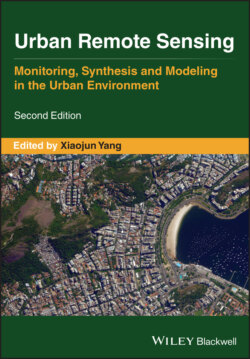Читать книгу Urban Remote Sensing - Группа авторов - Страница 22
1.3.3 URBAN SOCIOECONOMIC APPLICATIONS
ОглавлениеThis part (Part IV) examines several innovative socioeconomic applications through remote sensing, and four chapters are included. It begins with Chapter 12 discussing the application of remote sensing for global urban monitoring, focusing on specific issues raised by United Nations Sustainable Development Goal (SDG)11.3.1, namely, change in land consumption per capita over time in cities. The authors attempt to address this specific goal through their work in the Atlas of Urban Expansion. They firstly review the construction of a universe of cities, its stratification, and the sampling rationale, describe the data and methods used to generate urban extent and population data for their city sample, report urban extent and population growth rates, and summarize their change. An accuracy assessment component is also included.
The remaining three chapters in this part are concerned with dasymetric mapping, urban slum mapping, and urban conflict damage monitoring. Chapter 13 examines the effect of image classification accuracy on dasymetric population estimates. The authors develop a binomial classification of buildings from high‐resolution remote sensor imagery. They systematically and iteratively manipulate the classifier to generate a series of outputs with various accuracy characteristics. They then generate a corresponding series of population estimates and investigate the relationship between the accuracy of classification and population estimation. Chapter 14 provides an overview on the methodological advance to address several major challenges in developing a global data repository on deprived areas. These challenges include defining the relationship between concepts of a slum household and a deprived area with the information from EO; establishing the costs and benefits of different types of EO data; establishing meaningful spatial aggregation units at different scales, which are suitable to deal with uncertainties, privacy, ethics, and user needs; and developing computationally feasible, scalable, and transferable methods to produce a global data repository on deprived areas. Chapter 15 focuses on remote sensing of urban conflict damage. The author discusses the linkages between urban conflict processes and urban damage patterns and proposes a theory of change to guide multitemporal satellite‐based monitoring of urban conflict. The author concludes that recognizing the various pathways that violent urban conflict manifests as damage and the means by which damage can be detected using multitemporal satellite data paves the way for further understanding of vulnerability and resilience of urban populations and infrastructure during wartime.
